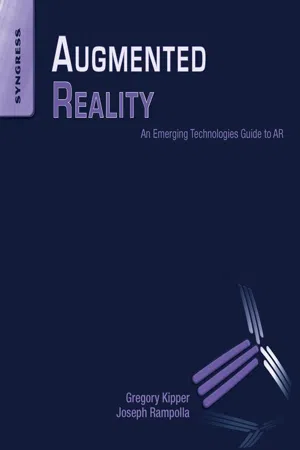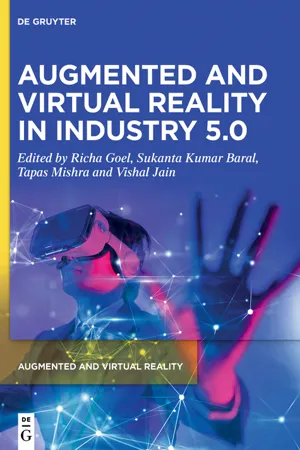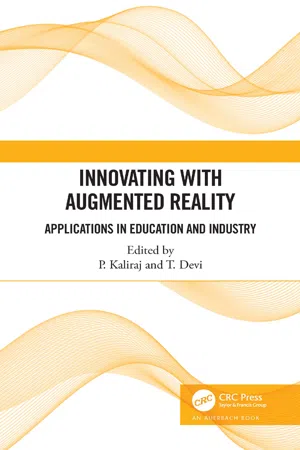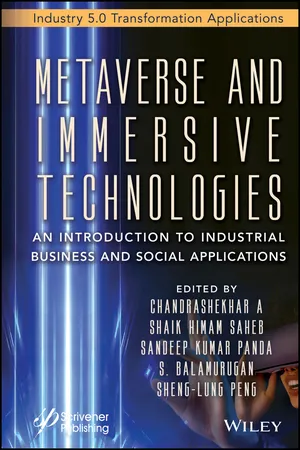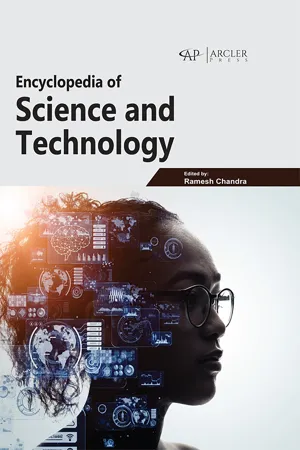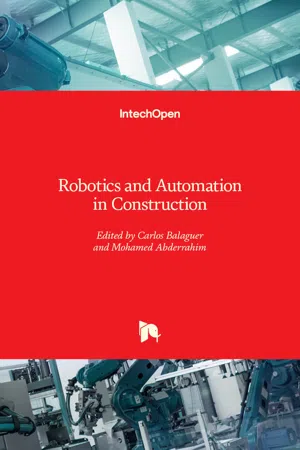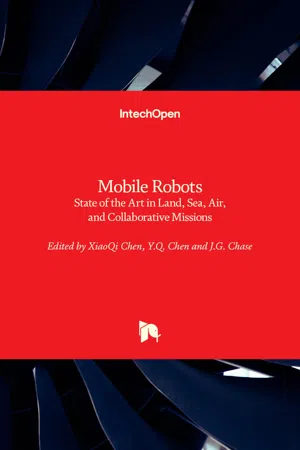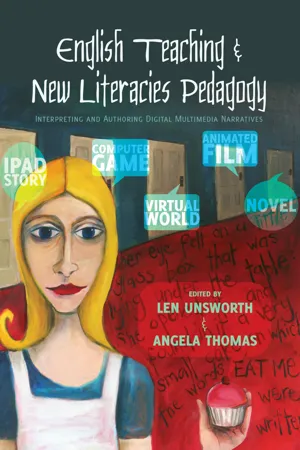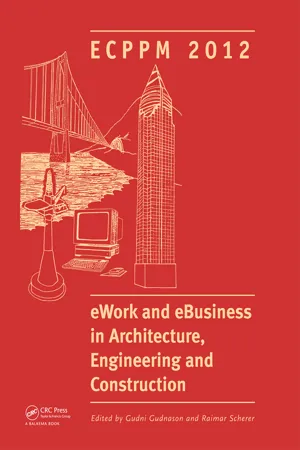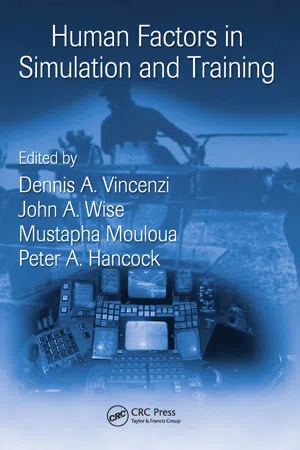Technology & Engineering
Augumented Reality
Augmented Reality (AR) is a technology that overlays digital information, such as images, videos, or 3D models, onto the real world. This is typically achieved through the use of devices like smartphones, tablets, or AR glasses. AR enhances the user's perception of the physical environment by adding virtual elements, offering interactive and immersive experiences for various applications, including gaming, education, and navigation.
Written by Perlego with AI-assistance
Related key terms
1 of 5
12 Key excerpts on "Augumented Reality"
- eBook - ePub
Augmented Reality
An Emerging Technologies Guide to AR
- Joseph Rampolla, Greg Kipper(Authors)
- 2012(Publication Date)
- Syngress(Publisher)
Chapter 1
What Is Augmented Reality?
Information in this chapter:
• What is Augmented Reality? • How Augmented Reality Works • A History of Augmented Reality • Augmented Reality of Today • The Differences between Augmented Reality and Virtual Reality • Challenges with Augmented Reality • The Opportunities for Augmented RealityThe Definition of Augmented Reality
Augmented Reality (AR) is a variation of a Virtual Environment (VE), or Virtual Reality (VR) as it is more commonly called. Virtual Reality technologies completely immerse a user inside a synthetic environment and while immersed, the user cannot see the real world around him. In contrast, Augmented Reality is taking digital or computer generated information, whether it be images, audio, video, and touch or haptic sensations and overlaying them over in a real-time environment. Augmented Reality technically can be used to enhance all five senses, but its most common present-day use is visual. Unlike Virtual Reality, Augmented Reality allows the user to see the real world, with virtual objects superimposed upon or composited with the real world. Therefore, AR supplements reality, rather than completely replacing it as depicted in Figure 1.1 Augmented Reality can be thought of as the blend, or the “middle ground,” between the completely synthetic and the completely real.Figure 1.1 A 3D Graphic or Model is Superimposed on the Real-World Object Through the Use of a SmartphoneOne of the easiest examples is a heads-up display, or HUD, used by fighter pilots. It is likely we have all seen examples of a HUD in movies or television documentaries. A HUD gives the pilot a digital overlay that shows an artificial horizon, the digital altitude, digital speed, and other information while looking out the cockpit window as shown in Figure 1.2 Another example that has appeared in the past few years is the artificial “first down” line Figure 1.3 - Adarsh Garg, Valentina Emilia Balas, Rudra Pratap Ojha, Adarsh Garg, Valentina Emilia Balas, Rudra Pratap Ojha(Authors)
- 2000(Publication Date)
- Bentham Science Publishers(Publisher)
Due to the recent rapid advancements in technology, Augmented Reality (AR) has emerged as a sophisticated technology for communication and knowledge exchange [1-4]. Azuma (1997) described augmented reality (AR) as having the following three features: (a) the integration of real and virtual objectives; (b) the interactive and real-time display of images; and (c) the registration (aligning) of augmented reality, and virtual items with one another. Two Boeing airplane engineers named Thoman and David founded AR in 1992. The first experiment's objective is to build a display that can alter the physical world. With this, virtual reality is taking the place of the real world. It requires more sophisticated mechanical arms and programmatically coded machinery to show [5]. It has industrial, medical, and military uses. AR is being used in a variety of fields, including entertainment, tourism, architecture, and marketing [3, 6, 7].Augmented and Virtual reality (AVR) begins with the most powerful internet itself. It enhanced effective ways for learning and technology to teach complex knowledge. This technology is a theoretical and pictorial representation but left the part of real-time factual reality. Augmented Reality (AR) was designed with three-dimensional digital elements in a real environment to alleviate these drawbacks. Students look at these facts from several perspectives. 360-degree computer-generated images are used in virtual reality (VR) to recreate the virtual world in front of users wearing headsets. Through the application of this technology, people are given the idea that they are physically moving through and engaging with virtual environments. The primary distinction between these technologies is that whereas AR is used to create digital items within the context of the real world, VR is used to engage pupils in a virtual environment. India's higher education system is about to hit a fascinating inflection point. Digital technology is already being used increasingly frequently in educational settings. Higher education is currently being pushed into the experiential sphere by the forces of augmented reality (AR) and virtual reality (VR).Recent Developments and History of AR
It has been thought that AR would improve the knowledge, perceptions, and communication of students. These technologies have the power to boost productivity in global tasks. However, until the 1990s, inertia became important. AR books are important stepping stones that connect the physical and digital worlds for the general audience. The use of AR technology in the classroom can benefit learners with three-dimensional (3D) shows and asynchronous experiences that are attractive to learners (Fig. 1 ).Fig. (1))- eBook - ePub
- Richa Goel, Sukanta Kumar Baral, Tapas Mishra, Vishal Jain, Richa Goel, Sukanta Kumar Baral, Tapas Mishra, Vishal Jain(Authors)
- 2023(Publication Date)
- De Gruyter(Publisher)
18 ]. AR may be utilized for knowledge, amusement, or entertainment by increasing the user’s perception and interaction with the natural surroundings. The operator may roam around the 3D virtual image and study it from any angle, much like a natural thing. The knowledge supplied by computer-generated items aids greatly in carrying out real-world tasks. AR has the ability to modify how we interact with technology. It makes the impossible feasible, and its applications in education are underway. AR interfaces allow for the seamless interaction of the real and virtual worlds. Learners engage when AR technology is combined with educational information; it generates new types of automated applications that improve the efficacy and desirability of teaching and learning in real-world contexts for learners.AR is a revolutionary media that associates the features of pervasive figuring, physical computing, and communal computing. This platform offers unique possibilities by integrating the actual and the simulated world, along with uninterrupted and implicit user control of the topic of view and easy involvement with 3D data, items, and actions in a natural way by means of augmented reality technologies [19 ]. The designed and constructed AR application has proven to be beneficial in mastering computer science concepts that ordinary students struggle to comprehend or grasp. It has really pushed learning to a great height, allowing the learners to visualize smoothly about what is going on and understand the difficult topics. On the other hand, several experiments were also conducted to establish the finest set of practices for the creation and usage of such AR apps [20 ]. Students who adopted Mobile Learning Augmented Reality (MLAR) were able to pursue all the textbook subjects, without wasting much time browsing for information. Learners using MCAR are motivated to study plants at the education stage because they are designed to view virtual plant models using AR technology. The ability of students to access material when and where they want and use the devices they already own, has a huge potential to improve learning, and AR provides a valuable technique to easily engage learners in mobile learning. Nursing educators should continue to think imaginatively about how to best integrate these emerging tools. Students and teachers will have a more pleasant experience with AR technology if they pay close attention to the technological solutions available, learner media preferences, and accordingly choose the implementation strategy. The digital technological environment soaked in AR not only enhances the learner’s and educators’ capacities in terms of digesting and transmitting information but also helps to establish a synergetic association between them. The ultimate objective of combining current technology into tertiary education and research is to enable end users (both apprentices and instructors) to understand and recreate an advanced degree of engagement in a cybernetic reality as well as exploit the endless potential by developing smart ecosystems of information and instructional resources [21 - eBook - ePub
Innovating with Augmented Reality
Applications in Education and Industry
- P Kaliraj, Devi Thirupathi, P Kaliraj, Devi Thirupathi(Authors)
- 2021(Publication Date)
- Auerbach Publications(Publisher)
AR Applications and Resources in Classrooms4.11.2 Augmented Reality Applications for Classroom4.12 Future Augmented Reality in Education- References
DOI: 10.1201/9781003175896-4Objectives This chapter addresses the following objectives:- Learn about augmented reality (AR) in education
- Enrich knowledge on the utilization of AR
- Comprehend the environment of AR in education
- Understand the role of AR in the teaching and learning process
- Equip applications of AR in the classroom
- Acquire knowledge on future AR in education
4.1 IntroductionAugmented reality (AR) is a platform of a technology (Besin Urologulf, 2020) wherein classroom learning becomes more active and transitional. AR is employed in classrooms all over the world through electronic text and concepts in real social settings employing triggers for learning opportunities. It refers to the use of technology to superimpose information such as images, sounds, and text on the real world. It provides an interactive, reality-based display environment to enrich the real-world experience of users. It advocates and encourages the adoption of real and computer-based scenes and images for teaching learners difficult areas. Audio-video based learning can be enhanced through AR for classroom transactions, and AR simplifies complex learning. AR employs computerized simulation and techniques such as animation, image and speech detection, handheld devices, and powered display environments.4.2 Augmented RealityThe term “augmented reality” was introduced by Tom Caudell, a former Boeing scientist, in 1990. The idea of enhancement by virtual information was at first employed for various purposes during the late 1960s and 1970s. For the purpose of visualizing and training, AR has been used by many companies since 1990. Schools and universities are using it at present. Personal computers and mobile devices are availed for implementing the concept of AR, especially for replacing traditional educational environments through this innovative teaching and learning mechanism, and exclusively for encouraging classroom transactions between students and teachers and among students. Adding virtual components in AR, such as digital pictures, animations, or sensations, makes AR - eBook - PDF
Metaverse and Immersive Technologies
An Introduction to Industrial, Business and Social Applications
- Chandrashekhar A, Shaik Himam Saheb, Sandeep Kumar Panda, S. Balamurugan, Sheng-Lung Peng(Authors)
- 2023(Publication Date)
- Wiley-Scrivener(Publisher)
The ability for the pupils to construct their concepts, conducts experiments, and study/examine them in multi-dimensional views on virtual world windows. There are many tools available for preprocessing, during processing, and post processing to analyze the mass and force pathways of objects. By allowing students to interact with their designs and concepts naturally, augmented reality tech- nology can also improve the teaching and presentation abilities of engi- neering graphics. They may simultaneously plot the assembly process and check for component interface and interference. 8.4.2 Medical Applications In orthopedic surgery, a crucial role has been played by computer tech- nologies. Routinely, surgical planning was done in earlier days. Modern planning software that incorporates patient-specific multimodal and medical data has supplanted this. In addition to preoperative preparation, computers are used more frequently to assist surgeons (intra-operatively) 228 Metaverse and Immersive Technologies [41–43, 52]. For instance, CAD techniques are demonstrated to be supe- rior to traditional implantation techniques during arthroplasty surgeries. On the other side, robotic solutions are suggested to boost accuracy while simultaneously ensuring reproducibility. They haven’t yet been broadly accepted across all disciplines, though. Fundamentally, robotic technologies are designed to assist surgeons with accurate and deliberate mechanical actions. By adding intuitive fea- tures to medical information, technologies like augmented reality (AR) improve the surgeon’s abilities. When the user is entirely immersed in a virtual environment, this is referred to as augmented reality (AR). To expand the user’s field of vision, one can utilize a monitor-based display system, an optical see-through system, or a video see-through system. The tracking technology that underlies AR is a key element. - eBook - PDF
- Ramesh Chandra(Author)
- 2023(Publication Date)
- Arcler Press(Publisher)
Some businesses have found success in increasing sales and distinguishing themselves from competitors by allowing customers to interact with their products and services in novel ways, even from the comfort of their own homes. Because of their use of precise 3D Encyclopedia of Science and Technology 256 technology, augmented reality (AR) and virtual reality (VR) can be used in a variety of businesses as a tool for training and consulting. Explain the concepts of virtual and augmented reality. Virtual reality (VR) and augmented reality (AR) are vastly different. AR enhances the present by fusing digital content from computers (such as images, sounds, and text) with the physical world (Wynne, 2007). In contrast, virtual reality completely replaces your current environment, whereas augmented reality only modifies it. A headset is typically required for the most immersive virtual reality experience. To enjoy augmented reality, you’ll need either a headset or, in some cases, just your smartphone. (Pokémon Go players can take their phones outside and use the built-in GPS and camera to track down virtual monsters to “catch and release.” Augmented and virtual reality have numerous business applications. Customers can use their smartphones and augmented reality to imagine how an item will look in their own homes. “If they’re buying a sofa, they’ll know if it fits in the area,” says Gary Radburn, director of virtual and augmented reality at Dell. “They’ll be more at comfortable hitting ‘purchase’ because they’ve seen it in their context.” Augmented reality (AR) has been shown to increase sales at brick-and-mortar stores by making the products more familiar and approachable to customers. Virtual reality has the potential to improve the shopper’s experience. Customers in the market for a car, for example, can don a headset and see 360-degree images of different car models in a variety of colors and other options not accessible at the dealership before making a final decision. - eBook - PDF
- Carlos Balaguer, Mohamed Abderrahim, Carlos Balaguer, Mohamed Abderrahim(Authors)
- 2008(Publication Date)
- IntechOpen(Publisher)
Examples include the Augmented Reality systems by Roberts et al. (2002) and Lawson & Pretlove (1998). In all of these applications the main thrust of the research is to use AR techniques to augment physical objects in the environment with additional information or views of their hidden structure. Maintainer and repairer could use AR as a visualization aid for maintenance and repair. These datasets could then be rendered and combined in real time with a view of the real structure. This would be very useful for minimally-excavation/invasive operation, which reduces the opening of a structure/object Improving Human-Machine Interfaces for Construction Equipment Operations with Mixed and Augmented Reality 213 by using small cuts or no cuts at all. AR technology could provide an internal view without the need for larger openings. This might also guide precision tasks, such as displaying where to drill a hole into the pipe for testing. The information from the non-invasive sensors would be directly displayed on the object/structure, showing exactly where to perform the operation. Non-graphical representation can also be used as in the Augmented Reality-based equipment management system (AR EMS) by Wang & Dunston (2006). Invisible information can also be indicated by AR, for instance, a red-to-blue coloring scheme was used by Klinker et al. (2001) to represent temperature variations and distributions within heating pipes. This chapter introduces information on Mixed Reality (MR) and Augmented Reality (AR), and their existing research applications in the area of construction equipment operations. This chapter also elaborates two systems in the area of construction equipment operations: the first system is a Mixed Reality-based interface for backhoe excavations in dangerous working environments; and the other system is an Augmented Reality-based information management system for maintenance, repair and inventory checking of heavy construction equipment. - eBook - PDF
Mobile Robots
State of the Art in Land, Sea, Air, and Collaborative Missions
- XiaoQi Chen, Y.Q. Chen, J.G. Chase, XiaoQi Chen, Y.Q. Chen, J.G. Chase(Authors)
- 2009(Publication Date)
- IntechOpen(Publisher)
If an unexpected situation arises the robot can discuss the problem with its human partner and arrive at a solution agreeable to both, similar to the collaborative behaviour in human teams. Augmented Reality (AR) is a technology for overlaying three-dimensional virtual graphics onto the users view of the real world (Azuma 1997). AR allows real time interaction with these virtual graphics, enabling a user to reach into the augmented world and manipulate it directly. AR is used in this research to provide a common 3D graphic of the robot’s workspace that both the human and robot reference. The internal state of the robot and its intended actions are displayed through the virtual imagery in the AR environment. The human team member is thus able to maintain situational awareness of the robot and its surroundings, thereby giving the human-robot team the ability to ground their communication. By coupling AR with spoken dialog a multi-modal interface has been developed that enables natural and efficient communication between the human and robot team members, thus enabling effective collaboration. In this chapter, the development of the Augmented Reality Human-Robot Collaboration (AR-HRC) system is discussed. Related work is reviewed and its influence on the design of the AR-HRC system is discussed. AR is introduced, and its benefits in terms of HRC are reviewed. The initial development of an AR multi-modal interface is discussed and then the architectural design of the AR-HRC system is presented. A case study incorporating a mobile robot into the AR-HRC system is then presented and the robustness and effectiveness of this system is evaluated in a performance experiment. The chapter ends with a set of summary conclusions and a presentation of future research directions. 2. Related Work 2.1 Human-Robot Interaction In this work, collaboration is defined as “working jointly with others or together especially in an intellectual endeavor”. - eBook - PDF
English Teaching and New Literacies Pedagogy
Interpreting and Authoring Digital Multimedia Narratives
- Angela Thomas, Len Unsworth(Authors)
- 2014(Publication Date)
Fig 11.1. Reality-Virtuality Continuum (from Milgram & Colquhorn, 1999; Milgram & Kishino, 1994). Azuma’s first characteristic emphasizes the concept “augmented,” meaning the real world is augmented or enhanced in some form using a virtual object. Fur- thermore, both real and augmentation (virtual) are required to appear in the field of view. For example, a computer-generated online game is not considered AR due to the lack of the real-world component, as everything is virtual. The second AUGMENTED REALIT Y IN THE ENGLISH CLASSROOM | 215 characteristic of AR is the capability to be interacted with in real time. That is, the AR system will have to be capable of adjusting the virtual augmentation in real time with respect to the changing position of the user’s viewpoint. This also explains the last characteristic of AR, the registration in 3D. The registration is what makes virtual contents (e.g., 3D models of houses) coexist virtually with real-world objects in the real world. For example, an architect might walk into a house and with an augmented reality application be able to show where ren- ovations might occur and what they look like. As the architect moves through the house with the application, the augmented reality images will change accord- ing to the architect’s changing position and location. Augmented reality generally consists of four components as explained by Chinthammit (2007): 1. Display. A user will view the visual information through a display device. The device could be as simple as a computer screen, a mobile phone, or a tablet such as an iPad. Or it might be a more sophisticated device such as specialized glasses or a Head Mounted Display, which is worn on the head. 2. Movement. Tracking the capture of a user’s viewpoint is the first trick that makes the AR interface work. The user’s viewpoint is tracked to determine where the user is looking in the real world. - eBook - PDF
- Gudni Gudnason, Raimar Scherer(Authors)
- 2012(Publication Date)
- CRC Press(Publisher)
Additionally, perceived weaknesses and ideas for improving the system are presented. 1 INTRODUCTION The Architecture, Engineering and Construction (AEC) sector is widely recognized as one of the most promising application fields for Augmented Reality (AR), see e.g. (Sareika and Schmalstieg 2007). In a formal study, Shin & Dunston (2008) evaluated 17 classified work tasks in the AEC industry. They concluded that eight of them (layout, excavation, posi-tioning, inspection, coordination, supervision, com-menting and strategizing) could potentially benefit from the use of AR. The general approach of AR is to superimpose dig-ital information e.g. computer-generated graphics or symbols on the user’s view of the physical real world (Azuma 1997, Höllerer & Feiner 2004). The aim is to perform this in such a way that they appear as one environment and can be interacted with in real time (Mackay 1996). For the user, the AR interaction paradigm is based on similar tangible interactions that occur in interacting with the physical world, which makes it intuitive and easy to understand (Olsson et al. 2012, Wellner et al. 1993). Mobile devices, such as PDAs, tablet computers and mobile phones have become powerful platforms for building AR systems (Wagner & Schmalstieg 2009). A mobile phone was a natural platform decision in our case as well. Mobile phones not only are hand-held and have efficient enough processing power, but they also have integrated camera and GPS functionality. Mobile phones being personal devices, they could be used for urban planning visualization purposes as stand-alone applications by any stakeholders or end user groups. The interaction with residents, land owners and other stakeholders is often a key issue in building and land use planning. In Finland, where this study was conducted, this aspect has been actively discussed ever since the renewal of the Land Use and Building Act in 1999. - eBook - PDF
- Nilanjan Sarkar(Author)
- 2007(Publication Date)
- IntechOpen(Publisher)
The robot will retrace steps if an obstruction is encountered and create a new plan to arrive at the goal destination, as shown in Fig. 18. Although Giesler et al (Giesler, Salb et al. 2004) did not mention a user evaluation, they did comment that the interface was intuitive to use. Results from their work show that AR is an Augm ented R ea l ity fo r Hum an -Ro b o t Coll ab o rati o n 83 excellent application to visualize planned trajectories and inform the user of the robots progress and intention. Figure 18. Robot follows AR path nodes, redirects when obstacle in the way (Giesler, Salb et al. 2004) Bowen et al (Bowen, Maida et al. 2004) and Maida et al (Maida, Bowen et al. 2006) showed through user studies that the use of AR resulted in significant improvements in robotic control performance. Simlarly, Drury et al (Drury, Richer et al. 2006) found that for operators of Unmanned Aerial Vehicles (UAVs) augmenting real-time video with pre-loaded map terrain data resulted in a statistical difference in comprehension of 3D spatial relationships compared to 2D video alone. The AR interface provided better situational awareness of the activities of the UAV. AR has also been used to display robot sensor information on the view of the real world (Collett and MacDonald 2006). 4.4 Summary Augmented Reality is an ideal platform for human-robot collaboration as it provides many of the features required for robust communication and collaboration. Benefits of the use of AR include: • The ability for a human to share a remote (ego-centric) view with a robot, thus enabling the ability for the human-robot team to reach common ground. • The ability for the human to have a world view (exo-centric) of the collaborative workspace, thus affording spatial awareness. • The use of deictic gestures and spatial dialog by allowing all partners to refer to and interact with the graphic 3D overlaid imagery, supporting the use of natural spatial dialog. - eBook - PDF
- Peter A. Hancock, Dennis A. Vincenzi, John A. Wise, Mustapha Mouloua, Peter A. Hancock, Dennis A. Vincenzi, John A. Wise, Mustapha Mouloua(Authors)
- 2008(Publication Date)
- CRC Press(Publisher)
.The.movie.presents.many. other.innovative.examples.for.applications.of.AR . CONCLUSION As. the. computational. power. of. computers. continues. its. rapid. advance,. as. prophesied. by. Moore. (1965),.developers.of.AR-based.training,.during.the.upcoming.decades,.will.have.the.opportunity.to. create.AR.workstations.that.are.portable.and.powerful . .These.portable.and.powerful.workstations. can.enable.AR.in.the.real-world.work.settings.of.the.aerospace.industry . .AR.has.the.potential.to. positively. affect. training. by. enabling. higher. levels. of. recall. and. just-in-time. training. functions . . Training.could.occur.in.the.actual.work.setting.and.at.times.simultaneously.with.job.task.perfor-mance. .The.net.positive.effect.resulting.from.the.use.AR.as.a.learning.medium.may.derive.from.the. learners’.ability.to.mentally.match.augmented.information.directly.with.the.work.piece.in.front.of. them;.future.research.is.required.to.fully.ascertain.these.effects.on.the.cognitive.activities.associ-ated.with.job.tasks . REFERENCES Alessi,.S . .M ., .&.Trollip,.S . .R ., .2001 . . Multimedia for Learning: Methods and Development .(3rd.ed .). .Boston:. Allyn.and.Bacon . Azuma,.R . .T ., .1997 . .A.Survey.of.Augmented.Realty . . Presence, 6 (4),.355–385 . Azuma,.R . .T ., .2004 . .Overview.of.Augmented.Reality . . Proceedings of the Conference on SIGGRAPH 2004, Los Angeles, CA . Azuma,.R . .T ., .Baillot,.Y ., .Behringer,.R ., .Feiner,.S ., .Julier,.S ., .&.MacIntyre,.B ., .2001 . .Recent.Advances.in. Augmented.Reality . . IEEE Computer Graphics and Applications, 21 (6),.34–47 . Bandura,.A ., .1986 . . Social Foundations of Thought and Action: A Social Cognitive Theory . .Englewood.Cliffs,. NJ:.Prentice.Hall . Bandura,.A ., .1997 . . Self-Efficacy: The Exercise of Control . .New.York:.Freeman . Billinghurst,.M ., . &. Kato,. H ., . 2002 . . Collaborative. Augmented. Reality . . Communications of the ACM, 45, . 64–70. Billinghurst,. M ., . Kato,. H ., . &. Poupyrev,.
Index pages curate the most relevant extracts from our library of academic textbooks. They’ve been created using an in-house natural language model (NLM), each adding context and meaning to key research topics.
